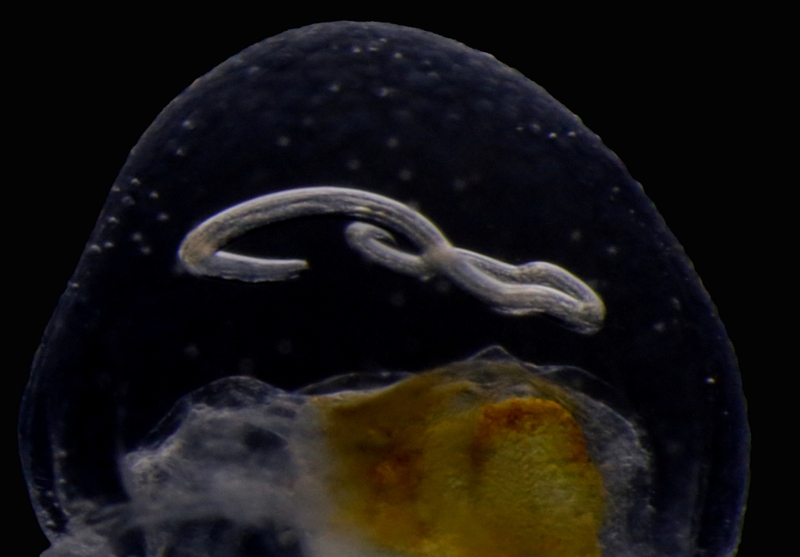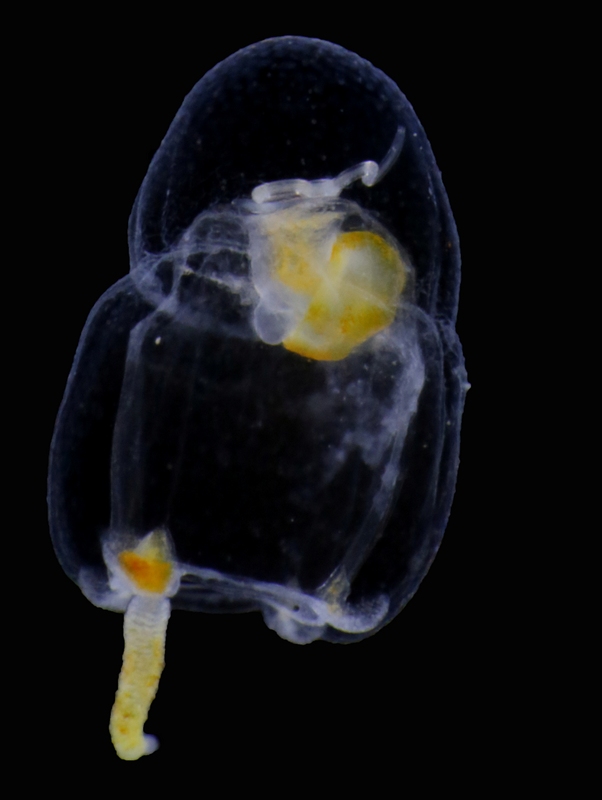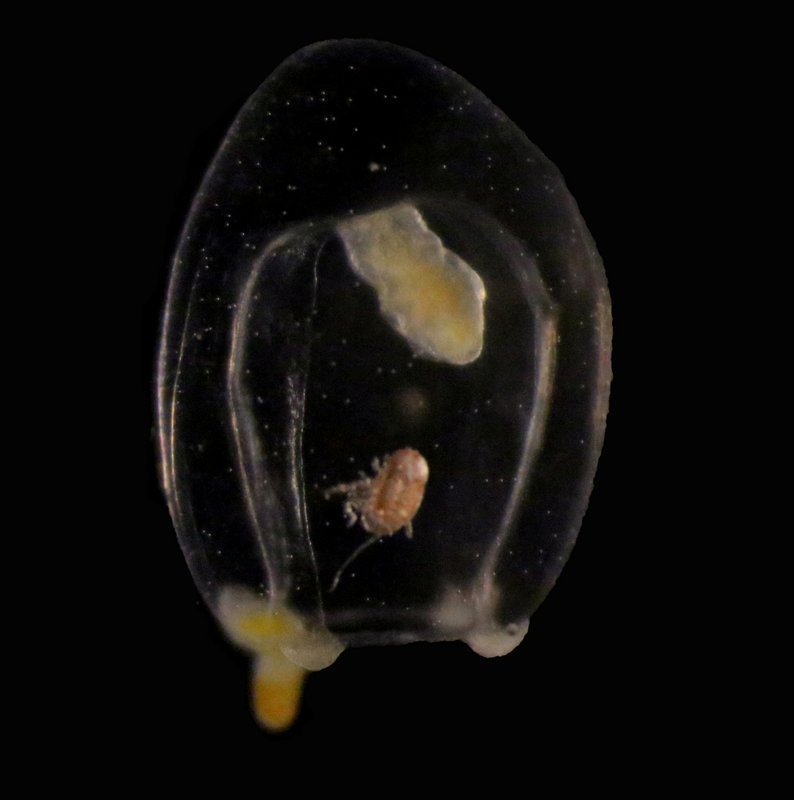Travelling alone through the water column may be a dangerous business: reaching the final destination is not always guaranteed, the risk of being eaten is high, and even finding food may prove a difficult task… which is why several animals choose to travel comfortably on or inside jellyfish and siphonophores!
Jellyfish are commonly involved in relationships of parasitism and phoresis (i. e., when one organism is mechanically transported by another without any further physiological dependence), and many examples have been observed of these interactions around the world. For instance, it’s not unusual to find hyperiid amphipods and sea-spiders –as well as lobster and crab larvae – piggybacking on the surface of large and tiny jellyfish, and while it’s still not clear whether or not all these passengers feed on their means of transportation, real parasitism and jelly-feeding has been confirmed for at least some of them. Jellyfish may also transport parasitic worms to their final hosts (like the nematode you see in the pictures), acting as carriers of parasites towards fish and mammals, and sometimes, eventually reaching humans as well!

A close-up of 2 showing the parasite embedded in the mesoglea (jelly) of the host. Credit: Aino Hosia.
These two hydromedusae of Euphysa aurata were collected this year in the fjords south of Bergen, and are only an example of jellyfish harboring other animals in this area. The species is a common and widespread jellyfish around here, but its role in the transmission of parasites and transportation of small crustaceans has never been explored. It might well be that, together with its gelatinous relatives, E. aurata will prove to be involved in many more biological interactions than we previously thought!
Luis Martell


